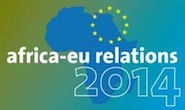Reflections from the Annual General Assembly of the Global Donor Platform for Rural Development
No doubt certain countries in the world, especially those in Africa, need to gain more reliable access to food in order to fight hunger. No doubt this requires increasing production and productivity in agriculture, as well as better integration of regional agricultural markets. No doubt the role of donors in supporting such efforts is important. But is food security just about producing more food, or about eating well? Are policy makers asking the ‘right questions’?
ECDPM’s Francesco Rampa chairing a session on the role of regional trade for food security. Get the summary: goo.gl/LRF9O
Donors working on food security met last week at the Global Donor Platform for Rural Development General Assembly, hosted by the Dutch Ministry of Foreign Affairs under the overall theme “Food, Farmers and Markets”. The keynote speech by professor Tim Lang of the City University London provoked lively discussions. Seventy years of what he calls “the productionist paradigm” have shown that agriculture is only one element of a good food system, which should be healthy, sustainable and help creating jobs. Producing more is important, and better linking food-surplus with food-deficit areas is crucial, especially in Africa. But “producing and trading more” for what? And what food system are we promoting when we want to “link farmers to markets”?
The world has changed over the past 70 years. More people live in cities than in rural areas now. Globally, we are already producing more than enough to feed everyone; hunger is largely due to inefficient food distribution and social inequality, not under-production. Latest figures show that more people are obese (1.4 billion) than going hungry (0.9 billion), and often these two problems coexist in the same country.
Rapid economic growth in the developing world brings about new food production and consumption patterns. Old healthy diets like the Chinese are disappearing, highly-processed fatty foods and soft-drinks from supermarkets are becoming more popular. The expansion of the middle-class has also led to a dramatic increase in obesity in Sub-Saharan Africa: 5% of the total female population and 61% of adults in the richest country there, South Africa, are overweight.
Thus, ecological and public-health objectives, not only production and trade ones, should drive agriculture and rural development.
Some scientists say that farming should be geared towards supporting a healthy diet, sustainable ecosystems, and employment. Therefore the solution lies in promoting horticulture, not agriculture. Plants are healthier than meat and processed goods (full of sugar and additives), horticulture generates more jobs than cash-crops or commodities. We need to increase biodiversity in each plot, and eat more of the plants grown.
To critics pointing that the world must double global food production by 2050, those scientists respond that we should not panic now, we have time before 2050; what we need is a serious policy debate on food systems, linking all relevant sectors and different experts.
So, 4 of the ‘right questions’ we should urgently address include:
1. The MDGs were mostly about an under-consuming world: can the post-MDGs debate, taking place in an over-producing world, address the issues above?
2. Africa is the most sustainable region in terms of food-systems, but will it last? Europe is the largest food market in the world (by value), but how can we make it healthier? And how can Europe and Africa work together for a more sustainable future?
3. Food security is about much more than increasing production, productivity and trade in agriculture: what development models and food systems are widely-supported initiatives like the Comprehensive Africa Agriculture Development Program (CAADP) really promoting?
4. When looking for best-practices and solutions, many donors still seem to think in terms of individual ‘projects’ or provide ‘suggestions’ of which crops African countries should invest in. Are donors prepared to adapt more quickly to the changing reality of agriculture and food systems? Are they ready to support the Africa-owned and holistic CAADP?
In this case, it ‘s almost literally food for thought!
———————–—
Francesco Rampa is Programme Manager Food Security at ECDPM.
This blog post features the authors’ personal views and does not represent the view of ECDPM.
Photo credits: Global Donor Platform for Rural Development


















{ 1 comment… read it below or add one }
Not sure what you mean by, “Africa is the most sustainable region in terms of food-systems,” as the majority of farmed land has depleted soil, and smallholder farmers struggle every day to reliably provide food and nutrition security for their families and communities. A sustainable food system in Africa would be based on smallholder farmers having secure rights to their land-encouraging farm investments that increase productivity and sustainability of farms, and attracting a new generation of youth to invest in farming.